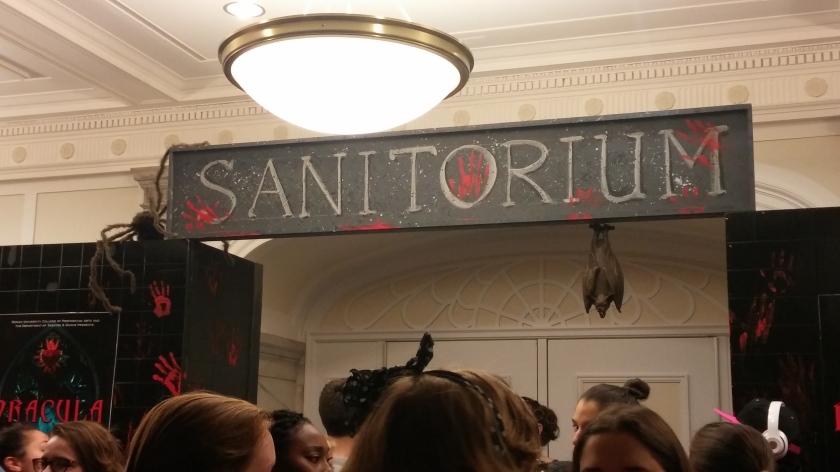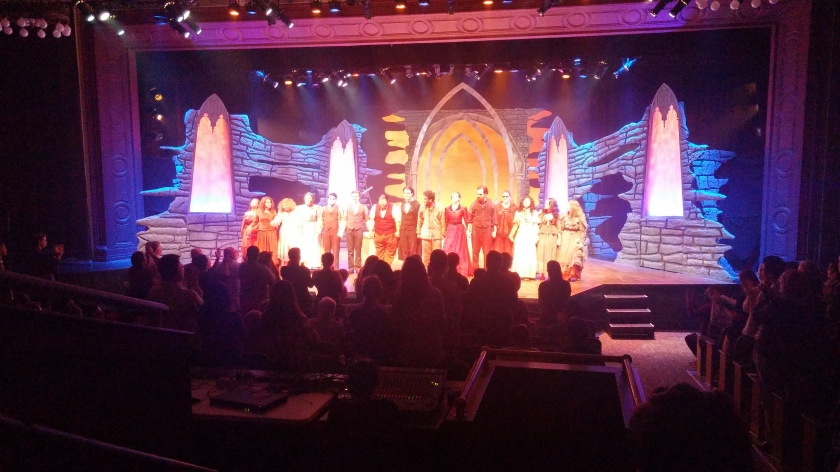
GLASSBORO, N.J. – People like going to haunted hay rides and watching horror movies this time of year. Some people may enjoy reading horror novels like Bram Stoker’s “Dracula”.
Instead of reading Stoker’s “Dracula” this month, I went to see the play.
“Dracula” premiered at Rowan University on Oct. 20 in Tohill Theater, which is located in Bunce Hall.
The theater was packed with people. Some were there to support the people on stage. Others came to enjoy the show.
I didn’t know what to expect.
The play opened with Robert Renfield played by Charlie Barney. Renfield is an insane person in an asylum, and the “brides” gathered on stage around him.
It took me a little while to figure out who was who. At first, I thought the play opened with Jonathan Harker played by Matthew Basen trapped in Dracula’s castle because the novel starts with Harker’s narrative.
However, the play does not follow the novel.
In the playbill’s director’s note it reads, “We read several scripts and chose this version, originally staged at Actor’s Theatre of Louisville, because we feel it honors the original novel. Nevertheless, as with all scripts, this production takes some liberties in translating the story into flesh.”
In the novel, Lucy Westenra becomes a vampire and Mina Murray is Harker’s fiancée. However in the play, Mina Grant played by Zulfiya Asquino becomes a vampire and Lucy Westphal played by Courtney Jarmush is Harker’s love interest.
This is just one aspect of the play that differentiates itself from the novel.
Instead of imagining who the characters are in the novel, the play shows an interpretation.
The cast in “Dracula” was phenomenal.
Robert Mora played as Count Dracula. He is a powerful vampire who has power to control characters like Margaret Sullivan who is played by Ileana Fortuno.
I read The Whit’s profile on Mora before the show started. His hard work shows in the play.
I also enjoyed Renfield’s character played by Barney. There was a part where Renfield describes how flies taste like, which reminded me of the novel.
Fortuno who played as Sullivan, the doctor’s assistant, did a great job showing her struggle when attempting to resist Dracula’s mind control.
Abram Van Helsing played by Russell Palmieri had the accent and the mannerisms like a Dutch doctor.
Along with talented actors and actresses, the play used special effects to create an amazing experience. Gun shots were fired and fog created a spooky atmosphere.
I can still hear the women screaming and picture the crimson blood splattering in the vampire’s coffin.

If you missed “Dracula” last weekend or want to go see it again, you can experience it on Oct 27-29 at 8 p.m. and Oct 30 at 2 p.m. in Tohill Theater.
I suggest getting a seat in the aisles near the front to see the characters up close as they enter and exit.
Students get free tickets with their Rowan ID. For faculty, alumni, military, children under 17, and seniors over 65, tickets are $10. General admission tickets are $15.

